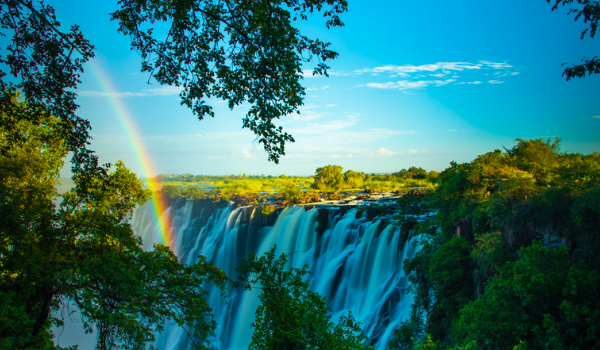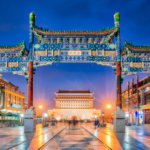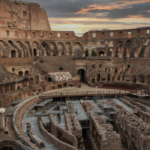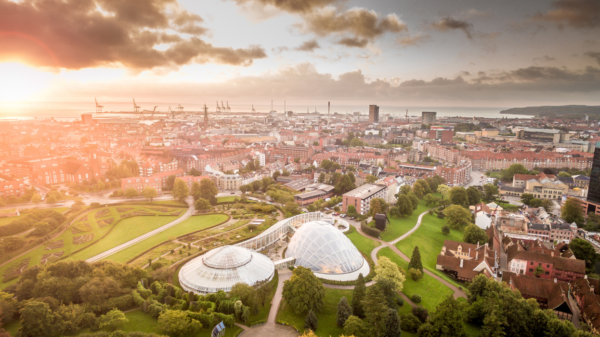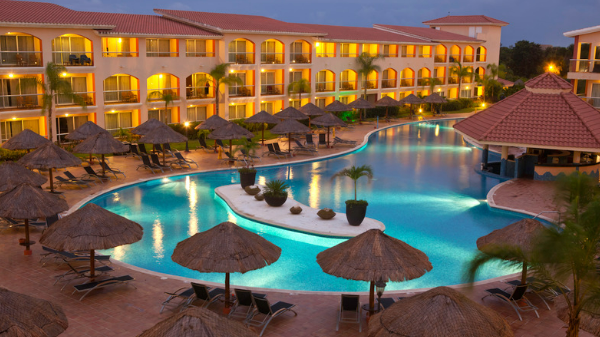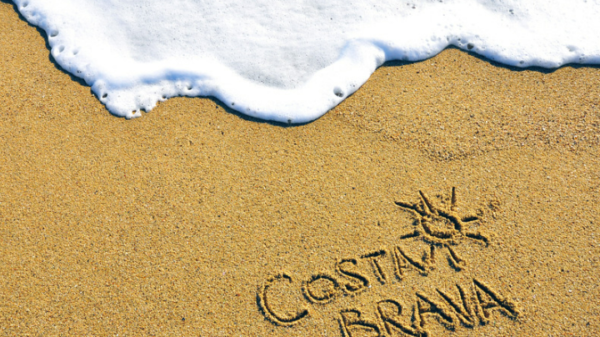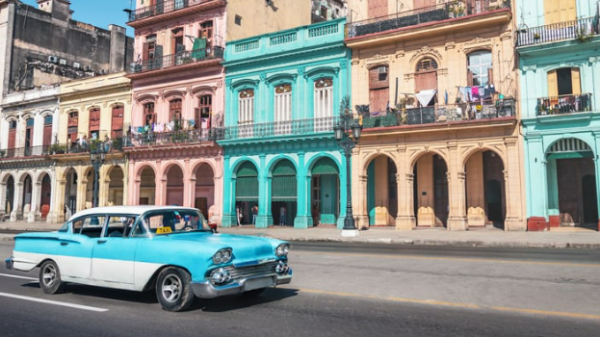Victoria Falls is one of Africa’s superstars. Located on the mighty Zambezi River, between Zambia and Zimbabwe, they are a UNESCO World Heritage Site and one of the Seven Wonders of the Natural World. Today we tell you the best points to enjoy these waterfalls in your trip to Africa.
It was the Scottish explorer David Livingstone who gave the waterfall its modern name, after Queen Victoria, but in the local Kololo language it is called Mosi-oa-Tunya: “the smoke that thunders”. And it really thunders. It is the largest sheet of falling water in the world in terms of width and height, with up to half a billion cubic meters of water per minute falling into the gorge, and its billowing clouds of mist can be seen more than 15 kilometers away. distance.
Victoria Falls: Zimbabwe or Zambia?
Victoria Falls can be seen from both Zimbabwe and Zambia. The Zambezi River is the national border between the two countries, and the impressive Victoria Falls Bridge, built in 1905 as part of Cecil Rhodes’ vision to create a continuous railway line across Africa, spans the divide to connect the two countries.
About three-quarters of the falls are in Zimbabwe. Here, well-paved nature trails weave in and out of Victoria Falls National Park – where spray creates a rainforest ecosystem, and wild boar and monkeys roam free – to reveal 16 incredible vantage points. On the Zimbabwean side, you’ll be able to take pictures of the falls in their entirety, as well as the iconic rainbow of Rainbow Falls. Victoria Falls National Park is also one of the few places on earth where it is possible to see a lunar rainbow: when there is a full moon, the park stays open until late so that visitors can see the “lunar rainbow” at night. evening light.
The national park is surprisingly low-key and unaffected by commercialization: there are no persistent street vendors or exits through huge gift shops. Although Zimbabwe has been going through a difficult time for more than a decade, the opening of the new Victoria Falls International Airport – which offers more flights, as well as bringing more investment to the entire region – and the change of currency to the US dollar, make can now would be an excellent time to visit.
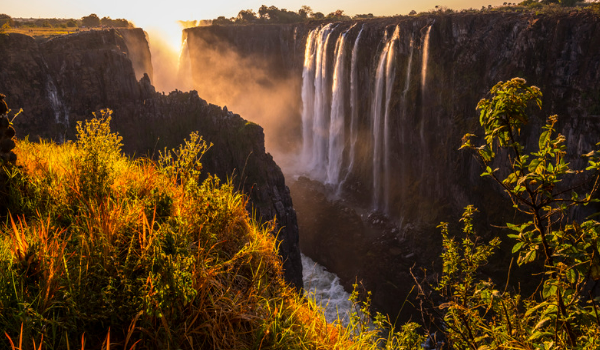
Zambia has a much smaller section of the falls but makes the most of it. The trails reach right to the edge, aptly named the Knife Edge Bridge, which allows you to cross the gorge and get closer to the rushing water. On the Zambian side is also one of the most famous attractions at the falls: The Devil’s Pool. This is the typical infinity pool, right on the edge of the cliffs above the Zambezi. In the dry season, travelers can take an exciting dip in the pool when the lower water levels reveal the rock walls that form a barrier against the 100-meter drop. The most spectacular sunset photos can also be taken from the Zambian side; the perfect place to watch the falls with the sunset behind is near the exit gate.
There are excellent safari lodges and colonial hotels on either side of the falls, centered on the Zambian town of Victoria Falls and along the Zambian River, about a 20-minute drive from the town and Livingstone Airport. Many are a short distance from the falls, and some are even close enough to see the rising spray.
When should you visit Victoria Falls?
The waterfall is an impressive sight throughout the year, although there are distinct wet and dry seasons. The best station depends on what you want to see. The dry season runs from May to November and provides unobstructed views of all parts of the falls. In May, the waterfall is in full swing and you will be able to hear the roar long before you see the water. June to September is the most popular time to visit, when the water level has begun to drop and reduced splash ensures better visibility, offering excellent photographic opportunities. In October, the heat and humidity cause the water to drop to a trickle, revealing the magnificent gorge. At this time of year, Zimbabwe is worth choosing, as the waterfalls on the Zambian side are almost dry; However, the most remarkable thing about Zambia is that it is the best time to have tea on Livingstone Island, on the edge of the falls, and swim in the Devil’s Pool which is open from September to December, depending on the water level.
December to April is the wet season, when a wall of water cascades down the cliff. If you visit at this time of year, you’re guaranteed to be soaked; you need a poncho and a waterproof camera bag. In March, the falls are bursting and the sheer volume of water spray can obscure the view… but the rainbows created by the dense mist are impressive.


